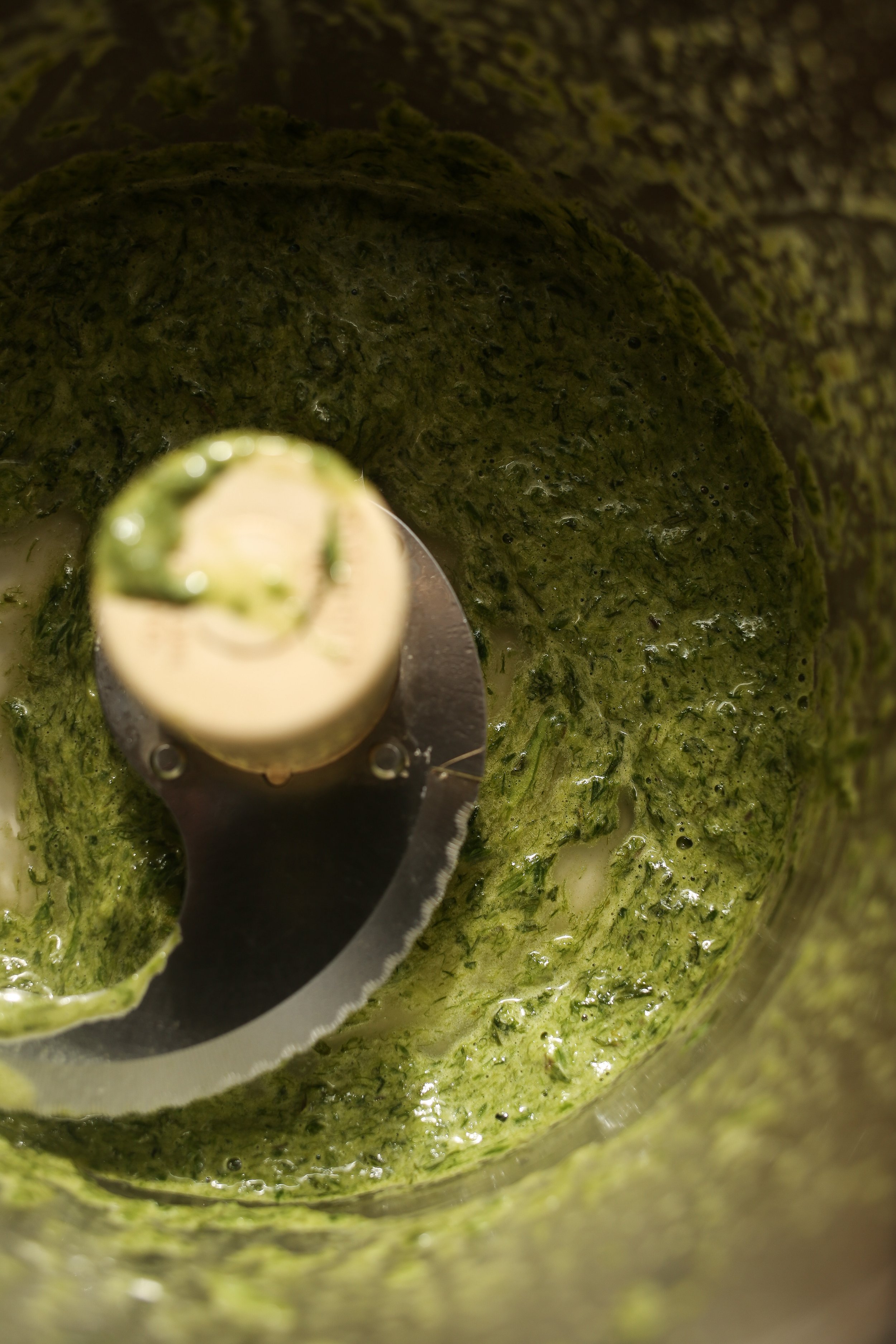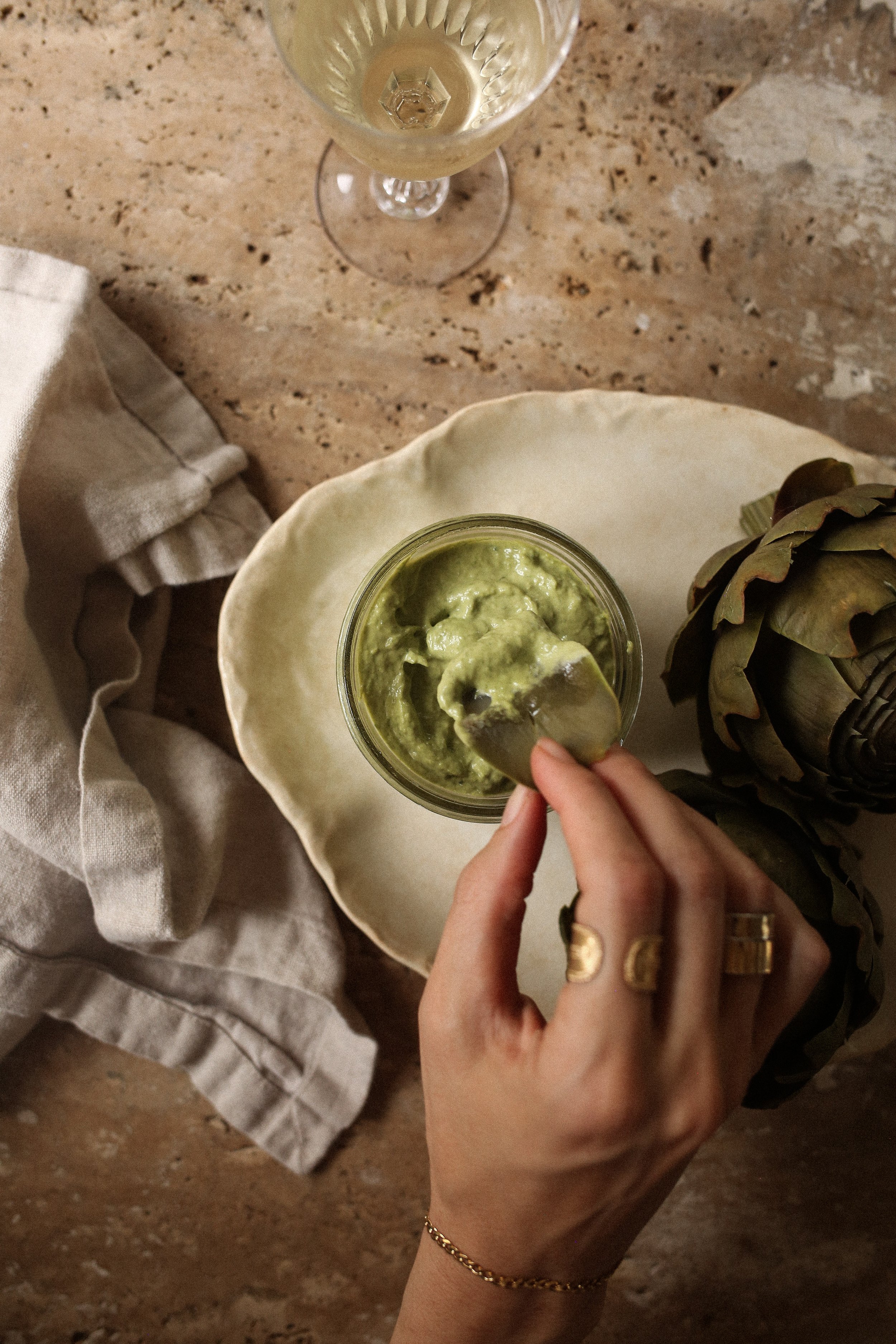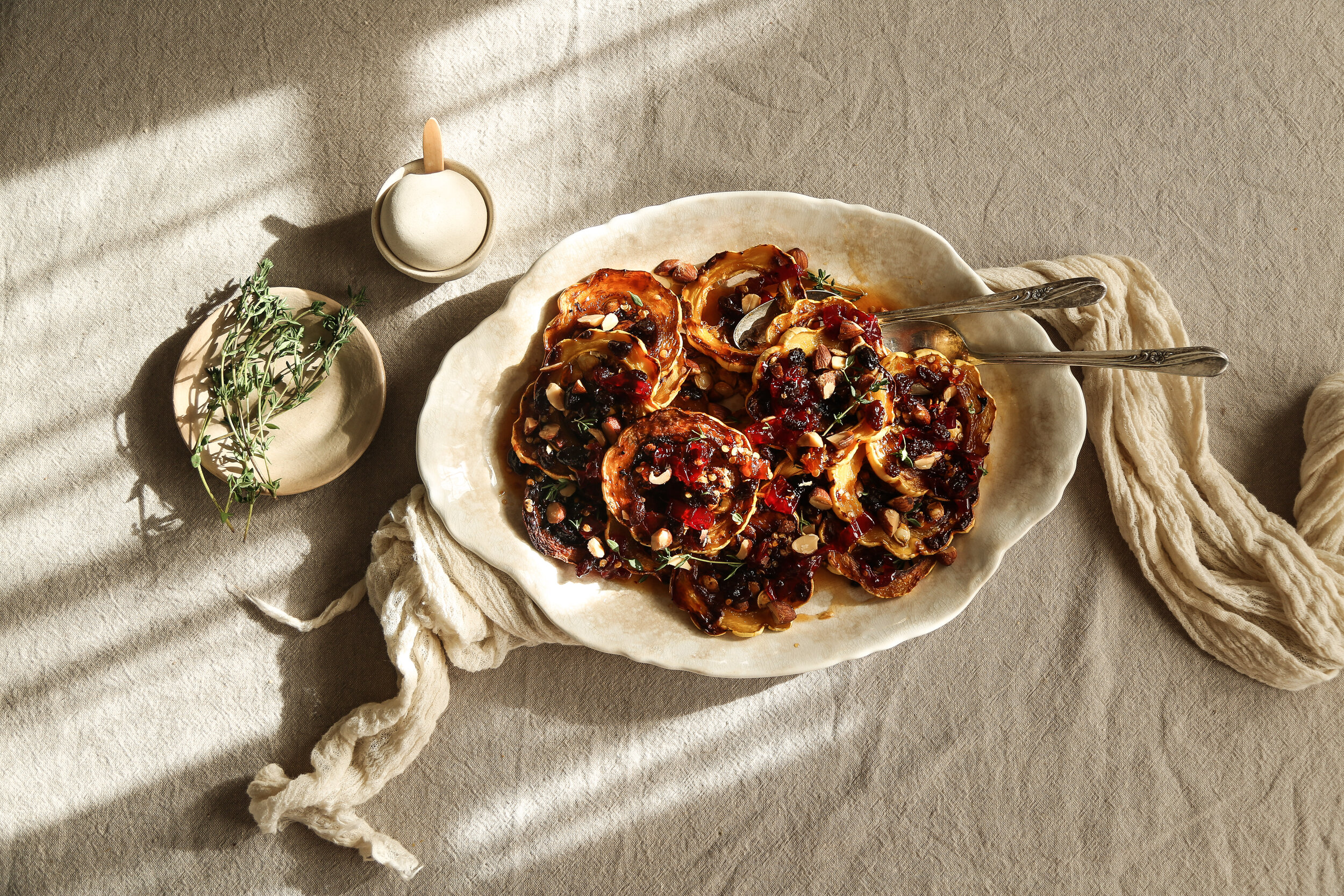Ramp Aioli

Ramp Aioli Recipe
If you follow me on social then you probably saw me picking ramps (aka elite onions asI nicknamed them haha) when we were back east last month. And then attempting to bring them back to LA. By which I mean I secured them in a ziplock bag with a water soaked paper towel, sealed it tightly, packed it up with lots of thoughts and prayers and hoped for the best as it journeyed to survive a night in Massachusetts, a 3 hour car ride, a night in NYC, a subway ride, a checked bag, a 3 hour airport delay, a 6 hour flight and a 20 minute uber ride home. Thankfully the attempt was successful and they survived. Which you probably already guessed based on this post, otherwise I obviously wouldn’t have a ramp recipe to share.
While my ramps survived their long journey home, they were a bit worse for the wear (side note- ramps are actually usually only good within a day or two of being picked), so I had to scrap a few of my original recipe ideas for them in favor of something that could be cooked down, pureed or blended in. Now this is no easy task because I have a list about a mile long of things I want to make with ramps. But while the list is long, ramp season (and my ramp supply) is short, so I knew realistically that I’d only get to about one or two recipes.
It just so happened that when we returned from our trip, I noticed our artichokes were ripe and ready for the picking. So I also decided to start working on coming up with some fresh artichoke recipes, or even a special aioli I could make to serve with them steamed. After wracking my brain, it suddenly hit me, like duh! We obviously need to make a ramp aioli! Because what is more special than that?! It was absolutely delicious and so perfect with the steamed artichokes, but it’s also so useful for so many other things (adding to salads, dressings, sandwiches, seafood, meat, etc.) and it’s also a great way to use up ramps that are teetering on the edge (Hi, my ramps! haha). It also makes a little bit of ramps go a long way and it gives you a way to add the flavor of ramps to all sorts of dishes without needing a ton of them. It’s essentially the ramp gift that keeps on giving.
Below, I’m sharing my recipe for ramp aioli and everything else you need to know about ramps.
THE QUESTION OF THE DAY-WHAT EXACTLY ARE RAMPS?
Ramps are essentially a wild garlic/scallion. However, unlike standard garlic, the flavor of ramps is more concentrated and definitely packs more of a punch. It’s a little brighter, a little crisper, a little sharper. Pretty but potent.
WHERE AND WHEN TO GET RAMPS
Ramp season is short and fleeting, typically starting sometime in late March/early April and going until late May/early June, and they grow in damp, wooded areas typically in the northeast through some parts of the midwest (my brother has found them in Indiana).
Typically you forage for ramps, however you can find them at some farmer’s market and specialty food shops around New England and the Tri-state area. If you’re very lucky, you might even be able to track them down at a farmer’s markets around LA and other parts of the country (but it’s basically like finding a unicorn).
A note if you’re foraging them yourself- please do not pick the bulbs! They are an endangered plant and the bulb is required so that they can grow back again. Also, don’t pick leaves that are too small, and try to leave 1-2 leaves per plant (aka only take half a plant). These are just a few simple ways to sustainably forage for ramps and ensure that they come back year after year so that you, and others, can continue to enjoy them.
OK, BUT WHAT DO RAMPS TASTE LIKE?
Think of them as a garlic, leek, shallot, scallion hybrid, but with a more concentrated, deeper flavor. The bulb is a bit more garlic/shallot like, while the leaves are more similar to scallions/leeks.
WHAT CAN YOU USE IN PLACE OF RAMPS?
If you can’t get your hands on ramps, don’t worry. You can use garlic, leeks, shallots or scallions, depending on the recipe. For this aioli, for example, I’d say would you want to use garlic or scallions, or a mx of both.
HERE’S WHAT YOU NEED TO MAKE RAMP AIOLI
The ingredient list is quite simple. It’s just your standard aioli ingredients, plus a handful of magic aka ramps. Here’s the full rundown-
RAMPS- Of course! I only use the leaves and save the red/white part of the stem to pickle; however, you can absolutely use the full ramp if you choose
AN EGG- please bear with me as I know how obnoxious this is about to sound, but farm fresh is best, or the absolute highest quality eggs you can get, since it’s not getting cooked; also fresher, higher quality eggs add better flavor to the overall aioli
SALT- I like to use kosher or sea salt
OIL- I love the way olive oil tastes in this aioli recipe, but avocado oil also works well for those who prefer a neutral oil
ACID- lemon juice or vinegar both work great here; I like the light brightness of the lemon juice paired with the ramps, but it’s also great with a white or rosé balsamic or white vinegar
DIJON MUSTARD- not absolutely necessary but it does round out the flavor profile quite nicely
FRESH GROUND BLACK PEPPER- as with the mustard, this isn’t totally necessary and can definitely be omitted, but just adds a nice touch to the overall flavor profile
HERE’S HOW TO MAKE RAMP AIOLI
It literally takes all of two seconds to make ramp aioli and everything is done right in a food processor. Honestly, the hardest part is cracking the egg (well, tracking down the ramps, first and foremost, but besides that…). Here’s what you do-
Add the egg to the food processor along with a pinch of salt and pulse a few times, until it’s whisked and frothy.
Add in the ramps and pulse until they’re blended in.
Slowly begin adding oil, a little at a time, until the mixture emulsifies and you have your desired consistency.
Add your acid of choice and mustard and fresh ground pepper (if using), season with additional salt if needed, blend a few more seconds, and that’s it.
The aioli can be used immediately, or transferred to an airtight container and kept in the fridge for up to a week.
WHAT TO DO WITH RAMP AIOLI
Add a little deliciousness to your sandwiches, salads and savory dishes, that’s what you can do with your ramp aioli. Here are just a few of my favorite ways to use it-
Use it with veggies, like dipping in steamed artichoke leaves as I’m doing here, or with crudite
Spread it on a sandwich, burger, sausage or hot dog
Use it as a salad dressing (just whisk with additional vinegar/acid and oil to make it a bit thinner)
Use it in place of mayonnaise to make a flavor-packed egg salad, tuna salad, chicken salad, crab salad, etc.
Coat meat, fish, seafood or veggies with it before grilling or baking (We did this with a piece of salmon that we baked and it came out beautifully!)
RAMP AIOLI
Yields about 1 1/2 cups aioli
INGREDIENTS
1 large egg (preferably farm fresh)
A generous pinch of kosher or sea salt
A large handful of fresh ramps, cleaned and stems removed (stems can be left on if you prefer more of a bite in the aioli)
1 cup olive or avocado oil + more if you prefer a thicker aioli
Juice of 1/2 a small lemon (or 1 tablespoon vinegar, preferably either a white or white balsamic vinegar)
2 teaspoons dijon mustard (not absolutely necessary but adds a nice flavor)
Fresh ground black pepper (otpional)
DIRECTIONS
In the bowl of a food processor, add the egg and a pinch of salt. Pulse a few times just to get the egg whisked and frothy.
Add the ramps and pulse until the ramps have blended into the egg mixture.
Slowly begin adding the oil a little at a time, stopping every so often to scrape down the sides of the bowl. Continue until all of the oil has been added, or you’ve reached your desired aioli consistency. Feel free to add additional oil if the aioli is too thin.
Add the lemon juice or vinegar and pulse just to combine. Season to taste with additional salt, if necessary, and mustard and/or fresh ground black pepper (if using).
Use immediately or transfer to an airtight container and store in the refrigerator. The aioli will last up to a week.




















